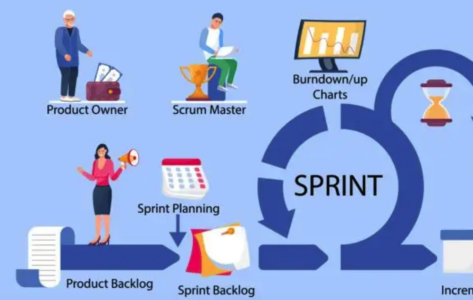Article Ideas Based on the Scrum Guide

- Introduction to Scrum and Its Core Principles
- Overview of Scrum’s purpose, history, and foundational ideas.
- Focus on the importance of empiricism, transparency, inspection, and adaptation.
- Understanding Scrum Values and Their Impact on Teams
- In-depth exploration of Scrum’s values: Commitment, Focus, Openness, Respect, and Courage.
- Practical advice on fostering these values within Scrum teams.
- Roles in Scrum: Product Owner, Scrum Master, and Developers
- Detailed breakdown of each role, their responsibilities, and the dynamics between them.
- How to implement effective collaboration among the roles for successful Sprints.
- The Scrum Team as a Self-Managing Unit
- Practical tips for empowering a Scrum team to self-manage, make decisions, and improve efficiency.
- The Scrum Sprint: Purpose and Structure
- Detailed look at the Sprint as a container event for all other Scrum events.
- Best practices for maintaining quality, adjusting scope, and ensuring Sprint predictability.
- Sprint Planning: Setting Clear Objectives for Success
- Practical tips on preparing for Sprint Planning, setting achievable goals, and prioritizing backlog items.
- Steps to create the Sprint Goal, and ways to align team efforts.
- Daily Scrum: Keeping the Team Aligned and Focused
- How to run an effective Daily Scrum to improve communication and address blockers.
- Examples of structures teams can use to streamline the meeting within 15 minutes.
- Sprint Review: Inspecting and Adapting the Product Increment
- Guidelines on presenting work to stakeholders and gathering feedback.
- Tips on making Sprint Reviews collaborative, rather than just a presentation.
- Sprint Retrospective: Continuous Improvement for the Team
- Methods to identify what went well, what could be improved, and actionable items for the next Sprint.
- Tools and techniques for running a productive Retrospective.
- The Scrum Artifacts: Product Backlog, Sprint Backlog, and Increment
- Explanation of each artifact’s purpose, how to manage them, and ways to maintain transparency.
- Product Backlog and Product Goal: Creating a Unified Vision
- How to develop a Product Backlog and align it with the Product Goal.
- Practical steps for backlog refinement and prioritization.
- The Sprint Backlog and the Sprint Goal: Staying Focused and Flexible
- Best practices for creating a Sprint Backlog that aligns with the Sprint Goal.
- How to adapt the Sprint Backlog based on daily progress while staying on track with the goal.
- Increment and Definition of Done: Building Quality into Every Step
- Understanding the Definition of Done and its role in ensuring quality.
- How to incrementally build towards the Product Goal with potentially releasable increments.
- Advanced Scrum Tactics: Customizing Events and Artifacts for Your Team
- How teams can adapt Scrum to fit their unique environments while staying within the framework’s guidelines.
- Examples of advanced techniques, like backlog refinement sessions and cumulative flow diagrams.






